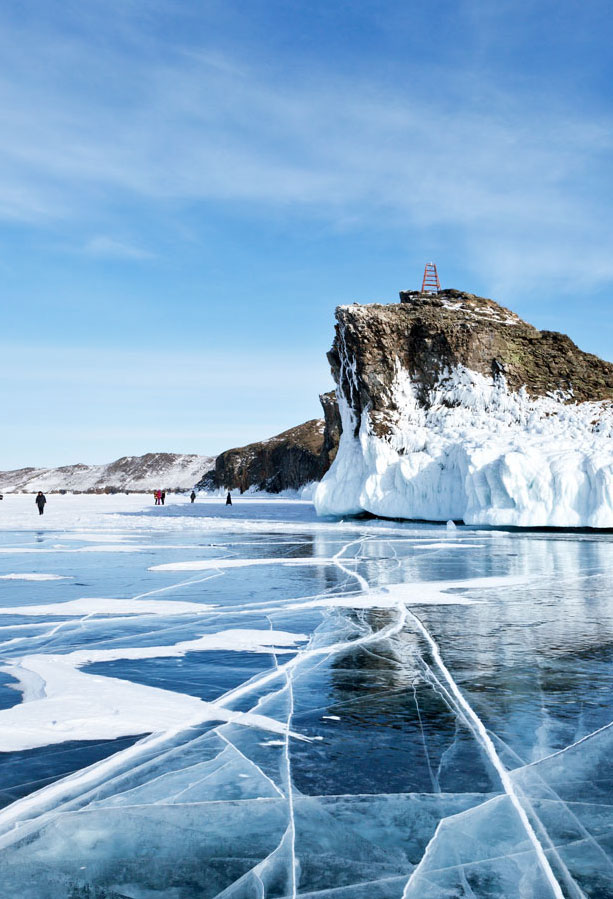It’s estimated that Earth is home to over 300 million lakes, far more than scientists have been able to fully study. Canada is the country with the most lakes — perhaps over 60% of the world’s lakes — while in the U.S., Alaska is home to more lakes than any other state. With all those lakes on the planet, these remarkable bodies of water can take on many shapes, sizes, and appearances. Here are seven of the most intriguing and unusual lakes around the world.
Spotted Lake – British Columbia, Canada
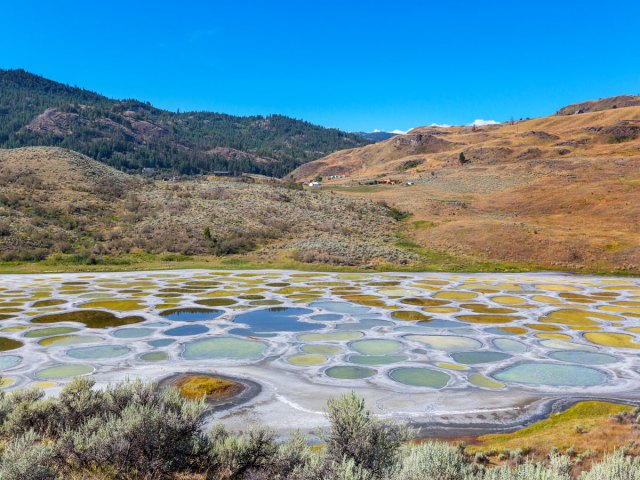
Throughout the winter and spring, British Columbia’s Spotted Lake appears much like any other mountain lake. But summertime brings about a magical change, when its evaporating waters give way to a spectacular polka-dotted array of colorful mineral deposits. The reason? Spotted Lake is an endorheic basin (meaning it has no evident outlet), so the lake is refilled each year with mineral-packed snowmelt from the surrounding Okanagan Valley. As temperatures rise, the lake water evaporates, leaving behind a series of yellow and teal-colored mineral deposits that materialize in a circular pattern across the lake bed.
Located a few miles north of the border with Washington state, Spotted Lake has long been known as Khiluk by the region’s First Nations peoples, who consider the waters a sacred site known for their healing properties. During World War I, the lake’s minerals were harvested to manufacture ammunition, though it has since been returned into the hands of tribal members, who work tirelessly to maintain the lake’s ecological beauty. While a fence has been erected as part of the preservation efforts, several vantage points along Canada’s Highway 3 offer stunning views of this otherworldly attraction.
Lake Retba – Senegal
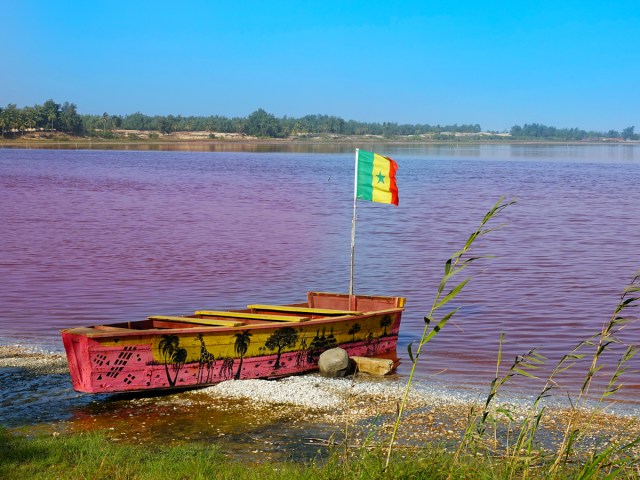
Separated from the Atlantic Ocean by only a thin strip of snow-white sand dunes, Senegal’s Lake Retba is one of the saltiest lakes in the world — more than 10 times saltier than the ocean. Locals call it Lac Rose, which translates to “Pink Lake,” and its startling strawberry hue is thanks to Dunaliella salina, a salt-loving algae in its waters (which have a staggering 40% salinity level).
Retba was once a freshwater lake, until a severe drought changed the water’s composition. It is now a center of salt harvesting, and workers take care to protect their skin with shea butter before wading into the briny depths. More than 66,000 tons of salt are harvested by hand each year, and it’s primarily used to preserve fish, but dried salt is also sold for cooking in neighboring nations such as Gambia, Mali, and Benin. The lake also draws an increasing number of tourists who come to float (thanks to salt’s increased buoyancy) and photograph the memorably rosy waves.
Hanging Lake – Colorado

Suspended 1,000 feet above the edge of Glenwood Canyon, Hanging Lake is an alpine fairyland of turquoise waters, wispy waterfalls, and delicate greenery like few other places in the Colorado Rockies. Fed by waterfalls, its fragile shoreline is made up of travertine deposits which have built up over the ages, even as a geologic fault allowed the cliffs surrounding the lake to fall away into the valley below — so the lake appears suspended or “hanging” above as visitors make the short, steep hike to this unique natural wonder.
The trail to Hanging Lake is located just off Interstate 70 and is less than a mile long, which, combined with the epic views, makes for one of Colorado’s most popular hikes. To protect the lake’s extremely delicate ecosystem, permits are required, and a shuttle system operates from Glenwood Springs. No dogs, fishing, or swimming is allowed at any time.
Lake Mashu – Japan
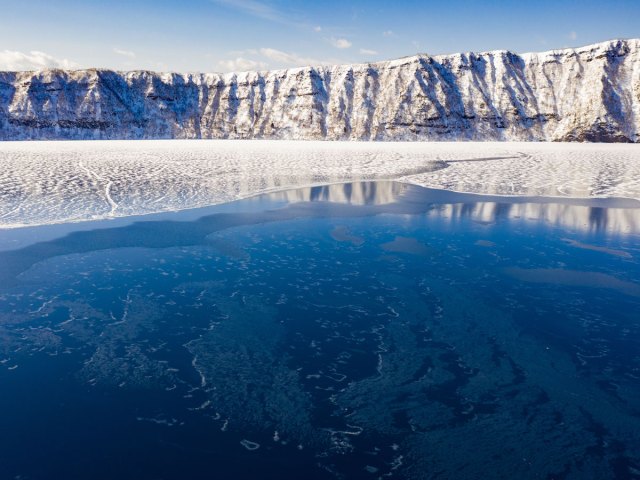
Though it’s frequently cited among the clearest lakes in the world, Japan’s Mashu-ko (in local parlance) is actually obscured much of the time — and that’s part of the pilgrimage site’s famed appeal. The dense fog that regularly blankets the surface of this caldera — one of three ancient volcanic crater lakes in Hokkaido’s Akan-Mashu National Park — only adds to the mystical beauty of a place long considered sacred by the Indigenous Ainu peoples, who also use the name “Kamuito,” or lake of the gods, in reference to this female spirit stronghold.
The lake itself is inaccessible to visitors (no boating, swimming, or fishing is allowed), but various viewing towers serve up sweeping vistas, as does the summit of Mount Mashu — the most dramatic of the viewpoints along the hiking trail on the lake’s eastern edge.
Pink Lakes of Murray-Sunset National Park – Australia
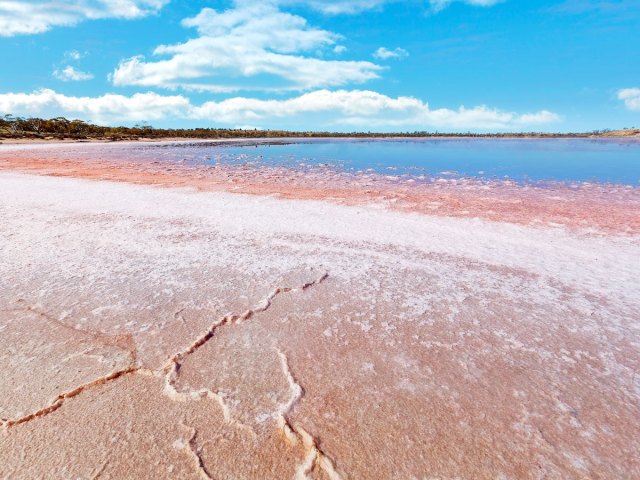
There’s no need for rose-colored glasses in Southern Australia’s Murray-Sunset National Park. That’s because four of its lakes often glisten in eye-popping shades of pink — from rose to fuchsia to bright bubblegum. The rare natural phenomenon is the result of Lakes Crosbie, Becking, Kenyon, and Hardy harboring some of the planet’s saltiest water. Scientists have discovered that certain algae and microorganisms thrive in such saline water and secrete beta carotene, the reddish pigment that tints the lakes pink. Depending on the hour or season, the color can even transform into an opalescent white or amethyst purple.
The second-largest national park in Victoria and a five-hour drive from Melbourne, Murray-Sunset was formed in 1979 after the area’s salt mines were abandoned. Today, pink lakes aren’t the only attraction — the park’s many campers and hikers may encounter rare animals like the paucident planigale, millewa skink, and regent parrot among the plentiful kangaroos and emus. Just note that the remote and unspoiled park doesn’t have cellphone reception, so photos of wildlife — and of course the pink lakes — will have to be shared afterwards.
Crater Lake – Oregon
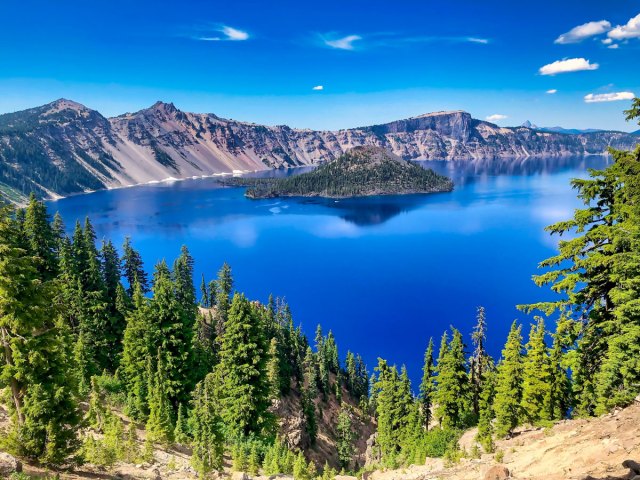
Before Crater Lake plunged to depths of almost 2,000 feet in the Cascade Mountains of south-central Oregon, a 12,000-foot-tall volcano called Mount Mazama loomed in its place. When Mount Mazama burst approximately 7,700 years ago, its walls collapsed inward and left a cavernous basin that filled up with water — resulting in the deepest lake in the United States (and ninth-deepest in the world). Without inlets or outlets that bring in sediment or mineral deposits, Crater Lake is fed only by precipitation, which gives it an incredibly clear blue hue — and the nickname “Lake Majesty.”
It is the centerpiece of a namesake national park that welcomes around 700,000 revelers per year. In the summer, visitors can drive around the rim of Crater Lake, with its dozens of scenic lookouts, or take boat tours around the two small islands that punctuate the lake’s smooth surface. Make sure to disembark to hike to the summit of Wizard Island for a spellbinding view. And if you think you’re brave enough, swimming in the lake is permitted in certain areas for those who can bear the lake’s frigid temperatures.
Lake Baikal – Siberia, Russia
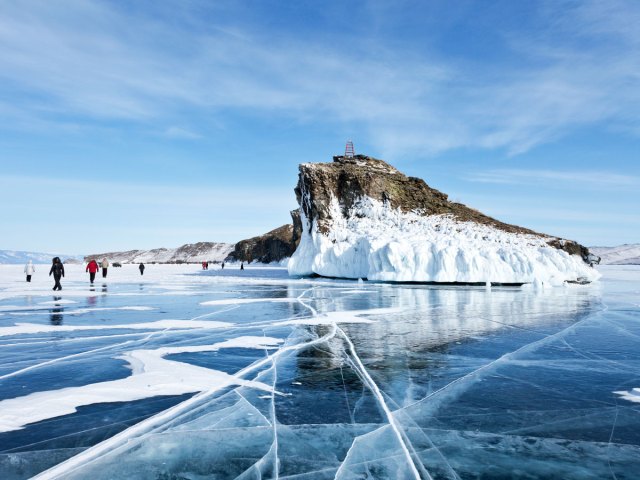
Located in southern Siberia, Lake Baikal holds a number of impressive records. It is the world’s largest freshwater lake by volume with 5,521 cubic miles of water — more than all of the Great Lakes combined and responsible for approximately 20% of the world’s fresh water. With a maximum depth of 5,354 feet, the Russian body of water is also the world’s deepest lake, with its lowest point lying more than 4,000 feet below sea level. Lake Baikal is estimated to be around 25 million years old, making it the oldest lake on the planet. The lake was named a UNESCO World Heritage Site in 1996 and is home to approximately 1,700 endemic plant and animal species.
The vast majority of seals are found in the world’s oceans, but only one species lives exclusively in freshwater — the Baikal seal. The species is endemic to the lake of the same name in Siberia, Russia. The seals survive in their freshwater environment by eating thousands of tiny marine crustaceans using comblike teeth similar to whales’ baleen.
More from our network
Daily Passport is part of Inbox Studio, which publishes content that uplifts, informs, and inspires.






